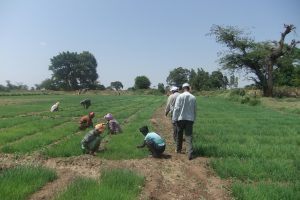Advanced skill in seasonal climate prediction coupled with sectoral decision models can provide decision makers with opportunities to benefit or reduce unnecessary losses. Such approaches are particularly beneficial to rainfed agriculture, the livelihood choice for the majority of the world’s poor population, for which yields are highly sensitive to climate conditions. However, a notable gap still exists between scientific communities producing predictions and the end users who may actually realize the benefits. In this study, an interdisciplinary approach connecting climate prediction to agricultural planning is adopted to address this gap. An ex ante evaluation of seasonal precipitation prediction is assessed using an agro-economic equilibrium model to simulate Ethiopia’s national economy, accounting for interannual climate variability and prediction-guided agricultural responses. Given the high spatial variability in Ethiopian precipitation, delineation of homogeneous climatic regions (i.e., regionalization) is also considered in addition to growing season precipitation prediction. The model provides perspectives across various economic indices (e.g., gross domestic product, calorie consumption, and poverty rate) at aggregated (national) and disaggregated (zonal) scales. Model results illustrate the key influence of climate on the Ethiopian economy, and prospects for positive net benefits under a prediction-guided agricultural planning (e.g., reallocation of crop types) strategy, as compared with static business-as-usual agricultural practices. Read more.
